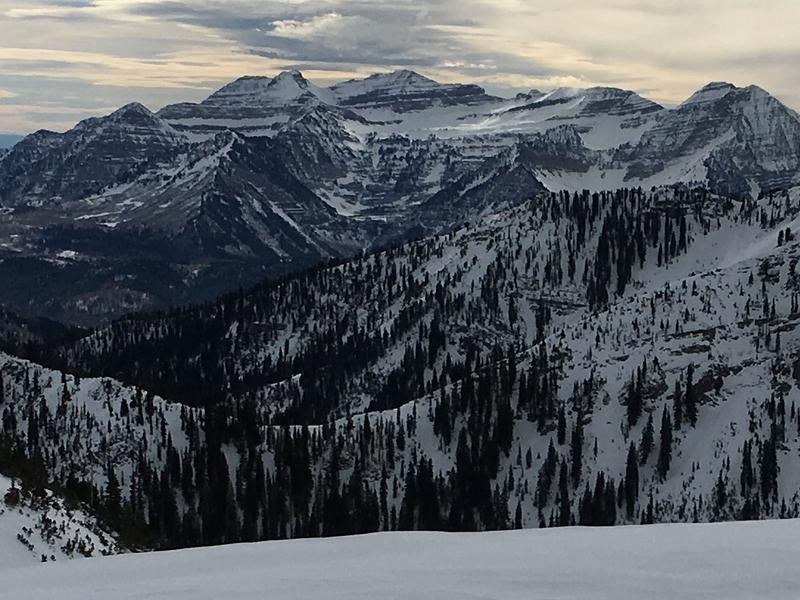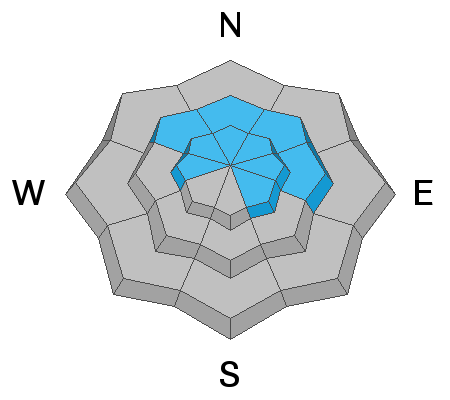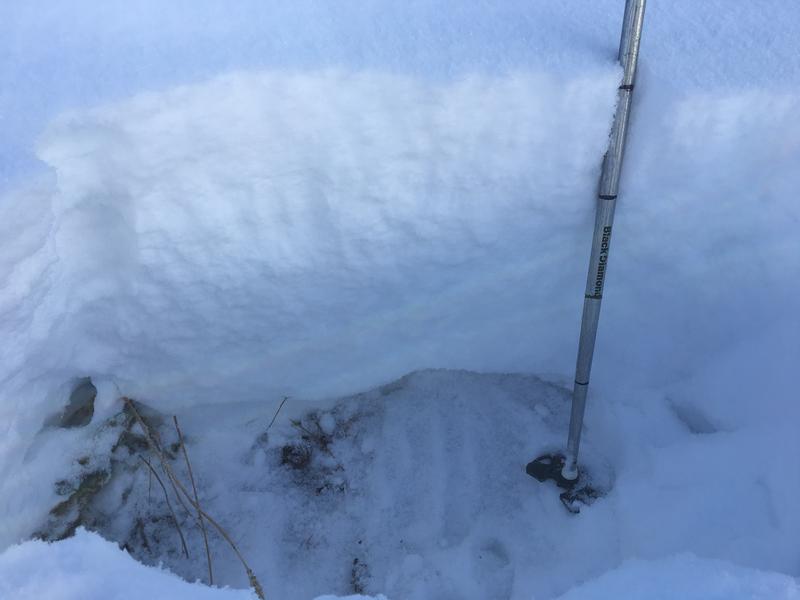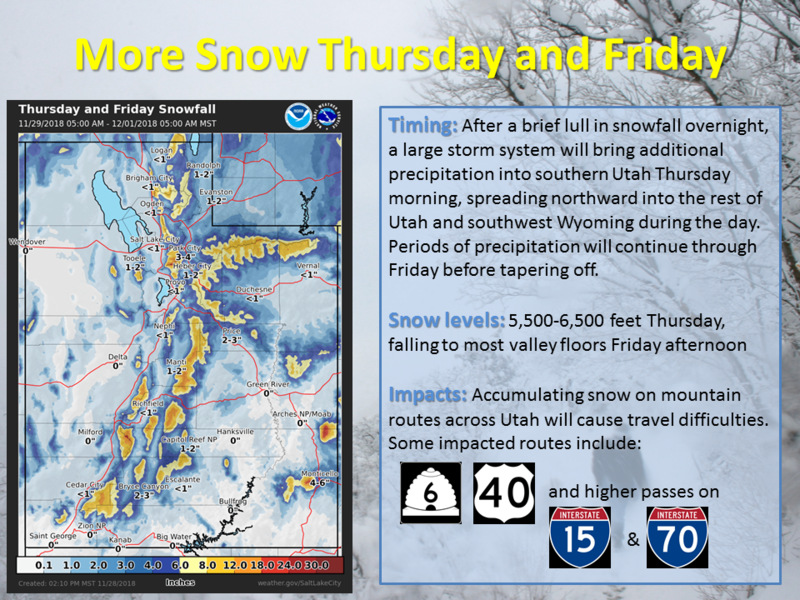Forecast for the Provo Area Mountains

Issued by Mark Staples on
Thursday morning, November 29, 2018
Thursday morning, November 29, 2018
Human triggered avalanches are likely on slopes facing the northern half of the compass at mid and upper elevations where the avalanche danger is CONSIDERABLE. These slopes have old snow from October that weakened and has become a persistent weak layer. This old snow also exists on upper elevation slopes facing W and SE but it is not as widespread thus a MODERATE danger exists on these slopes.
Before Thanksgiving, all other slopes were bare ground and they lack this layer of weak, old snow. With only the new snow from the last week, the danger on these slopes is LOW. The snowpack remains thin on these slopes and there is a greater danger of hitting rocks, stumps and logs. These obstacles will be harder to see with new snow that fell overnight and more falling this afternoon.
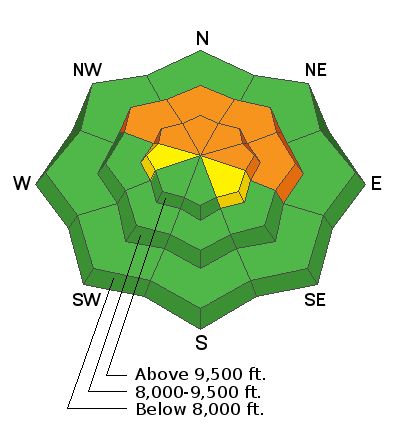
Low
Moderate
Considerable
High
Extreme
Learn how to read the forecast here


